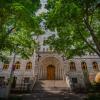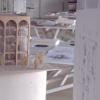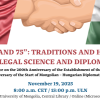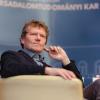The heart of Suleiman the Magnificent
2016
Jun
10
Szigetvár and its surroundings, which was the centre of heroic resistance to the Turks in 1566, has never been properly excavated. Dr. Norbert Pap from the University of Pécs, the leader of the latest research talks about their findings.
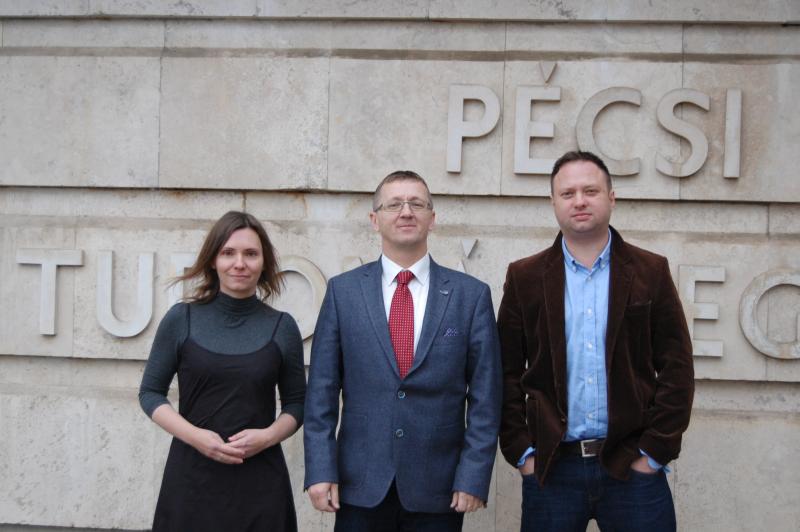
Hancz Erika, Dr. Pap Norbert, Dr. Kitanics Máté
What are the most important facts one should know about Suleiman the First and the Battle of Szigetvár?
The Szigetvár battle was in 1566 summer and early autumn. The Ottoman troops, we don’t know exactly the figures, may be 100 thousand people tried to occupy the castle of Szigetvár. It is situated 30 kilometers from Pécs in western direction. The defenders, 2300 Hungarian and Croatian soldiers died during the siege. The captain of the castle was Miklós Zrínyi, a Hungarian noble man. Both Zrínyi and Suleiman died at the end of the battle. Suleiman the Magnificent died in his tent. He was 72 years old and very sick. According to some historical sources his inner organs were taken out and buried in the tent. Later on Selim II, son of Suleiman ordered to erect an Ottoman mausoleum, a so called ’türbe’ on the place where his father died.
Since when has the tomb been attempted to be explored?
The first scientific publication was issued in 1903. The tomb has been attempted to be explored for more than 110 years. My research team was set up in late 2012. Since the beginning more than 40 people have worked in the project.
Why does finding the tomb have an outstanding importance?
I think people in Turkey consider the discovery of the tomb something very important concerning their identity. Suleiman the Magnificent represents the „peak” of the existence of the Ottoman Empire, the memory of the glorious past. Furthermore the tomb (türbe) is the only missing mausoleum of the Ottoman dynasty. The only missing, but may be the most important one symbolically. Two Ottoman emperors died in battlefields,Murad I in Kosovo Polje (1389) and Suleiman I in Szigetvár (1566) and his internal organs were buried there. They were ghasi, and the place of death became important pilgrimage places. Murad’s tomb survived the centuries and is also a frequently visited historical pilgrimage place nowadays. Kosovo, and Kosovo Polje unfortunately remained a symbolic place of antagonism. The Szigetvar case is different.
Suleiman is considered to be a more significant historical personality, than Murad and the siege of Szigetvár castle symbolizes a very important turn in world history. To commemorate the place, in 1994, in the vicinity of the tomb a Hungarian-Turkish Friendship Park was established with the symbolic grave of Suleiman the Magnificent and with two monumental statues of Zrínyi and Suleiman. This symbol of reconciliation is almost unprecedented in the modern age and transmitted an important, positive message at the time when Huntington published „The Clash of Civilisations”. Hungarians and Turks have wreathed together for 20 years in peace. I think the place could be a symbol of the peaceful coexistence of Islam and the Western civilisation.
What kind of remains were found during the excavations in Szigetvár?
We have uncovered the remains of the cami or türbe walls during the archaeological excavations carried out in October/November 2015. The building constructed in the Ottoman era was rectangular; its wide walls were built bricks and stones. The main room of the building is 7.8x7.8 metres large. It could be accessed from the northwest, through a triple-aisle lobby. There is no trace of a mihrab or minaret. The building was covered with stone tiles, and there is a rather large, 2 metres deep robber pit in its central part, which was presumably dug by raiders in the late 17th century. Some luckily survived decorative elements of the former building show similarity to the decoration of the Suleiman türbe in Istanbul.
As far as I know, Turkish archaeologists also took part in the job. How did you share the work among one another?
The project is run by Hungarian researchers, but Turkish experts, architects, art historians have been supported our work as consultants. They have an important role in the field of validating our results.
From whom did you receive funding for financing the research? From what kind of funds could financial support be drawn to support the project?
The research for finding the traces of the tomb (türbe) of sultan Suleiman in Szigetvár has been carried out since late 2012, with funding received from the Turkish government (through TIKA). Since September 2015, through the Hungarian Scientific Research Fund (OTKA), the state of Hungary has also supported the inquiry.
Are all of the researchers from the University of Pécs, or are there researchers from out of town?
The overwhelming majority of the members are from the University of Pécs. There are a few exception, they are from Budapest and a colleague from Siófok. He is a Catholic priest, but an excellent expert of religious history as well.
I am a geographer and a historian. My colleagues are geographers, historians, art historians, archeologists, geophysicists, GIS experts.
How many potential locations were studied and how did you succeed to narrow them down?
The research group examined several possible locations and excluded numerous ones from the examination. These included the environs of the Hungarian-Turkish Friendship Park along the Almás Stream, where the symbolic grave of the sultan is still open to visitors. In the past this area was covered with water periodically, it was unsuitable for construction and its characteristics did not comply with the information on the tomb found in written sources.
We have also thoroughly examined the surroundings of the shrine church of Virgin Mary the Protectress, located approximately 400 metres to the southwest from the current location of Turbékpuszta. A memorial plaque worded in Hungarian and Ottoman Turkish, placed in 1913, announces on the church façade where the Sultan’s tomb used to be. . However, around the church built on a flat, marshy land, from where the fortress cannot be seen, the geophysical examinations showed no sign of the foundations of a significant building, a fortification or the remains of Ottoman era life. Earlier excavations also failed to uncover any type of evidence suggesting the above. se. The location does not comply with the geographical characteristics described in written sources about the tomb. Based on the above, in early 2015 we also excluded this location from the range of possible sites.
The research group already suggested in 2013 that the remains of the tomb may be located at an area so far ignored: on the top of the Turbék-Zsibót vineyard, located approximately 1200 metres from the church. The site is compatible with the written sources, while the traces of Ottoman era life are apparent on the surface (tile and brick artefacts, etc.). According to the local population, "Turkish ruins" used be located here, and they have reported Ottoman era archaeological artefacts on numerous occasions. With the geophysical and remote sensing examinations carried out in 2014/15, the traces of several buildings of a significant size could be described, all oriented toward the southeast. One of them is almost exactly oriented toward Mecca.
In which case will it be 100% for sure that the tomb of Suleiman was discovered?
Currently everything suggests that the building could have been Suleiman's tomb. However, in order to be able to assert this with 100% certainty, further examinations and the excavations of the other surrounding buildings are necessary.
Why do you think this topic is so popular among both the foreign and the domestic audience?
What can I say? I really don’t know. May be about the legend of the lost heart of Suleiman the Magnificent. It is a kind of Indiana Jones story… don’t know…
What was the scientific reaction called forth by the research? What was the reaction to the research by other fields of study?
It is too early to speak about scientific response. The first paper on the project in an international journal was published in December of 2015 in Die Erde. We are looking ahead to the reactions.
What was the media reaction to the research?
The most important news agencies, AP, AFP, EFE, MTI, the BBC and the Washington Post published articles on the project. My Turkish partners told me people were very excited in Turkey. Several thousands of articles and videos on the press conference were issued.
How can the University of Pécs take advantage of the current success?
It is not my task, but I think the media resonance could promote the internationalisation of our university. The prestige of the scientific work is growing now. As a result, several thousands of tourists are expected to visit Szigetvár annually. I am convinced that the site could be one of the top ten touristic destinations of the country.
What can we expect in connection with the research in the future?
We have a three- year perspective. Colleagues are working on not just the tomb issue, but the story of the battle, the folk traditions, remembrance of the place.
FACTS:
The Battle of Szigetvárwas fought from 5 August to 8 September 1566. It resulted in an Ottoman victory, but there were heavy losses on both sides. More than 20,000 Turks had fallen during the attacks and almost all of Zrínyi's 2,300 man garrison was killed, out of which the most,600 men were killed on the last day. Both commanders died during the battle. The importance of the battle was considered so great that the French clergyman Cardinal Richelieu was reported to have described it as "the battle that saved civilization”.
Almost a hundred years later in 1651, Zrínyi's great-grandson, also named Miklós Zrínyi and himself a famed general, composed an epic poem of some 1,500 stanzas recalling in vivid and often fantastic detail the events of the siege, the heroes on both sides, and the final sortie that led to the defeat of the Hungarians. An English translation was published in Washington, DC in 2011 by László Kőrössy.
The battle inspired the Croatian opera Nikola Subic Zrinski composed by Ivan Zajc in 1876. Its enduring fame is due in large part to its chorus, “U boj, u boj” ("To battle, to battle!"), written by the composer ten years prior to the rest of the opera. It has achieved lasting popularity as a Croatian patriotic song, removed from the context of the opera.
1 of March 2016
- Log in to post comments
University of Pécs | Chancellery | IT Directorate | Portal group - 2020.





